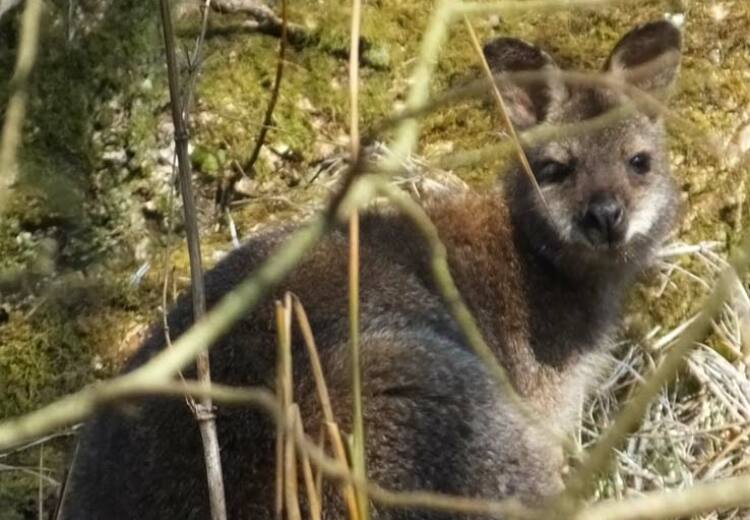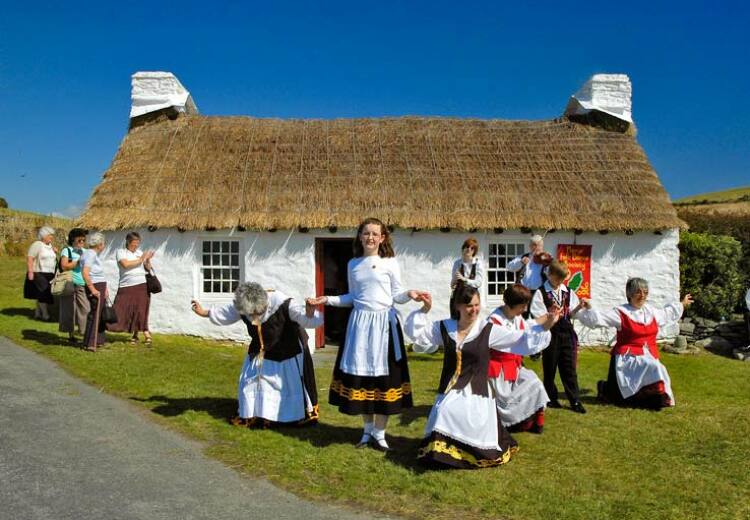This year’s survey indicates the highest number yet of nesting shearwaters on the Calf of Man since the existence of a small colony was confirmed in 2000 on the island by the Manx Bird Atlas.
Two years after an intensive effort to rid the Calf of brown rats (Rattus norvegicus), this is welcome news to the Calf Shearwater Recovery Project partners and volunteers who have spent many hours tramping across the island laying and checking bait stations.
The Calf is a small islet situated half a mile off the south-west coast of the Isle of Man. As a Nature Reserve and Bird Observatory, it is home to 33 species of birds breed on the Island, 10 of which are seabirds.
Kate Hawkins from Manx National Heritage said;
“After all our hard work, it is gratifying to learn that the effort to remove rats from the Calf appears to be having a discernible effect.”
Surveyors used standard sampling and detection techniques to find out where shearwaters were nesting and estimated that the number of occupied burrows this year was 424, an increase on the 2013 figure of 348.
Several more years of standardised scientific survey are needed to confirm that the shearwater population is recovering. Manx National Heritage (MNH), which owns the Calf of Man and bird observatory, points out that it is still too early to say for sure that the trend is upward.
Nor can the project team relax. Although the eradication operation went according to plan and signs of rats ceased by early December 2012, two positive sightings have since been logged and responded to as part of a long-term biosecurity plan.
Kate Hawkins emphasised;
“We must keep up our guard. It is all too easy for these rodents to find their way to the Calf, as this autumn’s discovery of a live rat at Cow Harbour shows. We ask everyone who visits the Calf, particularly boat owners, to be extra vigilant for signs of rats and to make sure that cargo, fishing equipment etc. is checked for stowaways before setting out for the island.”
The Calf Shearwater Recovery Project was initiated in 2012 with five organisations coming together in partnership to plan and carry out the removal operation on the island. Manx National Heritage was greatly assisted by the Manx Wildlife Trust, Manx BirdLife and the Department of Environment, Food and Agriculture, while the Animal and Plant Health Agency’s National Wildlife Management Centre (formerly part of the Food and Environment Research Agency) provided considerable technical and practical help and the Royal Society for the Protection of Bird (RSPB) and Manx National Heritage Trustees contributed substantial financial support.
The aim of the project was to attempt the eradication of rats (known locally as ‘longtails’) and provide a safe environment for the sustainable recovery of seabirds, on the Calf, most notably the Manx shearwater, a species which was first named as such from the once huge colony on the island.
Brown rats are thought to have first arrived on the Calf at the end of the 1700s and shearwater numbers fell away catastrophically after that until they were thought to be extinct on the island. The rodents are widely regarded as predators of ground nesting birds, their eggs and young and many island authorities around the world run campaigns to eradicate them, including most recently in Britain on St Agnes and Gugh in the Isles of Scilly.
Kate Hawkins said;
“We’ve had a really good go at getting rid of these invasive and destructive rodents and we think that we’ve removed all or almost all of them. A monitoring and mopping up campaign is in progress and it will be some time yet before rat-free status can be announced. Maintaining vigilance and continually reviewing biosecurity measures are key to keeping longtails under control and the shearwaters safe.”
Weather permitting, there will be further monitoring work on the Calf over the winter 2014 – 2015 period. The project team is looking for more volunteers to help with the field work over the next year. Anyone interested should contact Manx National Heritage for further details (see below).
For further information, please contact Kate Hawkins on (01624) 648022 or email kate.hawkins@gov.im.
Photo - Manx shearwaters only come in to land to visit their nests at night (Photo: Manx National Heritage)








